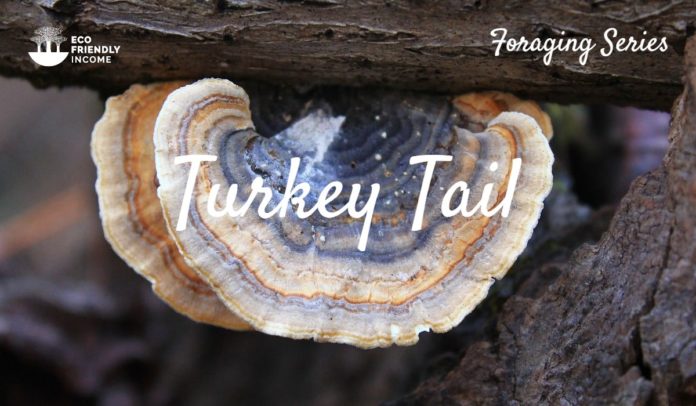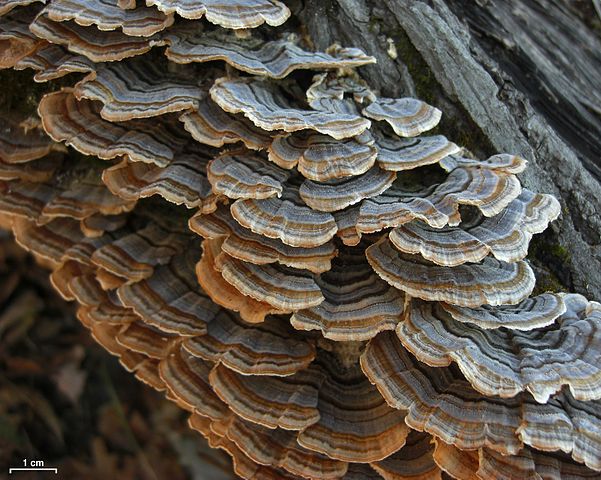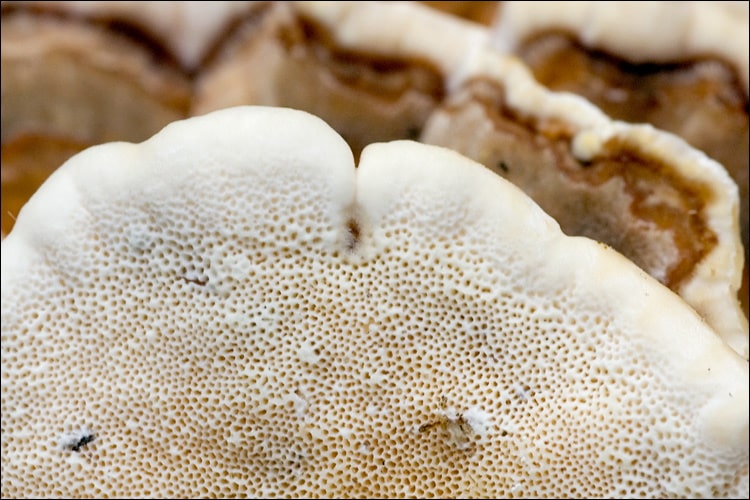These are among the most common fungi you can forage in the wild. Although learning how to identify turkey tail mushrooms is not easy.
I’ve been a tree planter for many years now, I’ve had the opportunity to see turkey tail mushrooms numerous times. At first, you’re not always 100% sure that’s what they are but with experience, you’ll be confident every time you see them.
They have an interesting look, like the name says, they look like a turkey tail!
I think any fungi lover should go hunt for them, so I decided to share my knowledge and teach you how to identify them!
In this guide, you can expect to learn the following:
- Turkey Tail Mushroom Picking Season
- How to Identify Turkey Tail
- Where they are Found
- What They Taste Like
- How to Store, Clean and Cook Them
Let’s get started!
Turkey Tail Mushroom Picking Season
Turkey Tails (Trametes versicolor) have a long picking season. They usually fruit from the end of July and to October, sometimes past that, depending on the weather.

Although keep in mind that microclimates in your area affect the fruiting season. That’s why you could find them earlier or later than that.
Factors like rainfall and weather affect when turkey tail mushrooms start to fruit. A good week of rain is always beneficial for any mushroom to spawn.
How to Identify Turkey Tail Mushrooms
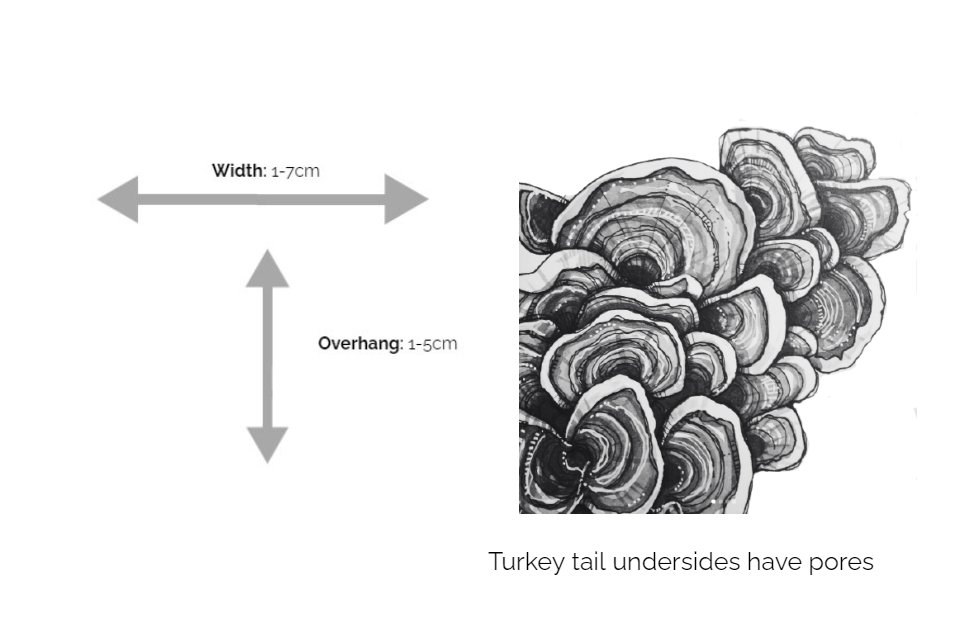
Turkey tail mushrooms (Trametes versicolor) are saprotrophic mushrooms that grow on dead trees. A good way to identify turkey tails is to look at their shape. Normally they are c-shaped and boast a variety of colors, which are always spread out in bands.
Additionally, if you look closely at their caps, they have a fuzzy or velvety texture.
When you look at turkey tail mushrooms from under, you’ll notice numerous small pores visible to the eye.
The caps aren’t so big, normally they spread up to 7cm wide and overhang about 5cm.
Turkey Tail Colors
They vary in color, here are the most common colors you can see:
- Light brown
- Beige
- Cinnamon
- Light gray
- Dark gray
Turkey tail commonly grows in large bunches, but sometimes you can see just one or two on a tree.
False Turkey Tail vs. True Turkey Tail: What are the Differences?
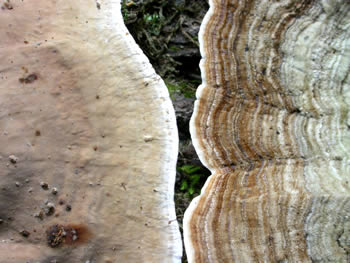
False Turkey Tail (Stereum ostrea)
Photo by Gary Emberger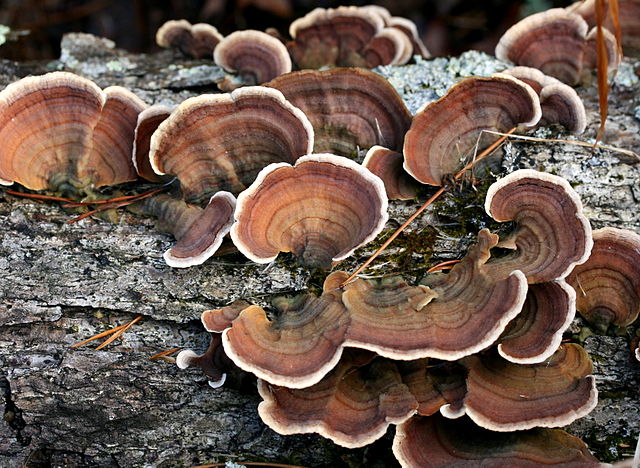
False Turkey Tail (Stereum ostrea)
Photo by Penny Firth / CC by SA 3.0
There are plenty of turkey tail lookalikes, which makes them harder to identify. But there are tricks to tell them apart, here are a few:
- Look closely at the undersides: Turkey tails have pores underneath but false turkey tails, like stereum ostrea, have smooth undersides devoid of pores.
- Look closely at the caps: True turkey tails have fuzzy, velvety caps. The hairs are fine and can be seen up close or felt with your fingers.
- Look closely at the bands: The color bands should have a clear difference, if the contrast is hard to tell, it’s most likey not true turkey tail.
FAQ
Q: Some species in the same family as turkey tail (Trametes) also have pores, so how to tell them apart?
A: You have to count the pores per millimeter, true turkey tails have 3-8 pores per mm, and other trametes have 1-3 pores per mm. Some species also have teeth-like porous undersides, but turkey tail’s underside porous surface is flat.
Q: What do you mean pores?
A: Turkey tail pores are little needle-sized holes where the fungi’s spores drop from.
Q: Are turkey tails hard and rigid?
A: No, actually they are quite thin and flexible.
Q: Are turkey tails edible? What is the flesh like?
A: Turkey tails are not really edible, the flesh is white and rubbery. The best way to prepare is to grind it into a powder and brew.
Where Turkey Tail Mushrooms are Found
Turkey Tail mushrooms are quite common, they’re found all over the world.
They grow on dead, rotting wood, but can also grow from the wounds of live trees.
Now if you want to find Turkey tails, it’s good to know they prefer to grow on deciduous hardwoods. Not every forest is predominantly deciduous, so you’re less likely to find them in a coniferous forest.
The majority of turkey tails are spotted growing on the side of a log, often on the cut end of lumber. They’re also common on stumps leftover from a fallen tree.
What Turkey Tail Tastes Like
When freshly picked, dried, ground, and brewed into a tea, turkey tail has a mild, earthy, and slightly bitter flavor.
How to Store, Clean & Prepare Turkey Tail Mushrooms
How to Clean Turkey Tail
Before you dry them, you need to clean the mushrooms. As a general rule of thumb, not just with turkey tail but any other mushroom, you don’t want to run water on them.
If you take your mushrooms to the sink and clean them in running water, they will absorb water and puff up.
Instead what you want to do is take a clean hand cloth and gently rub off any dirt from the turkey tail. A clean little brush is also handy to get into the cracks. That’s really all you need to do, they will dry much better if they’re not wet.
How to Dry Them
At home what I did was build a drying rack for herbs and mushrooms. Here’s how I did it:
- I build three rectangular frames out of 1×3 wood.
- I bought some patio door screener, cut them to the size of the frames and stapled them on.
- Built some legs for the frames and I just stack the frames on top of each other.
Pretty simple, this way I got three levels on the rack to dry stuff. I leave it by a well-lit window and air dry my herbs there.
The area needs to be well lit but not have direct sunlight for too long, this could bleach your harvest.
How to Store Them
My favorite way of storing turkey tails is straight into mason jars, but I grind them first.
What I like to do is use the fine side of a cheese grater and use it to grind my turkey tails.
This will make a fine powder that’s super convenient to store and use! Make sure they’re completely dry before grinding.
Store in a cool, dark place.
How to Prepare Them
Preparing turkey tail tea is quite simple, if you already dried and ground them, you’ve done most of the work.
Now all you need to do is use a tea strainer and add a spoon of turkey tail powder to your brews.
Medicinal Properties of Turkey Tail
Not much thorough research has been done on turkey tail, so these benefits are what folk and traditional medicine imply. This is not medical advice, before you ingest turkey tail, please consult a doctor or physician to get a proper opinion.
Here are 5 immune-boosting properties of Turkey Tail – according to healthline
- Packed with antioxidants
- Contains immune-boosting polysaccharopeptides
- May improve immune function in people with certain cancers
- May enhance the efficacy of certain cancer treatments
- May enhance gut health
Conclusion
That’s it! That should have covered everything you need to know to identify turkey tail mushrooms yourself. Enjoy!
But if you have additional questions, write them down below and I will do my best to answer.
Happy hunting!
Interested in medicinal plants? Learn about medicinal plants you can forage in our guide.

